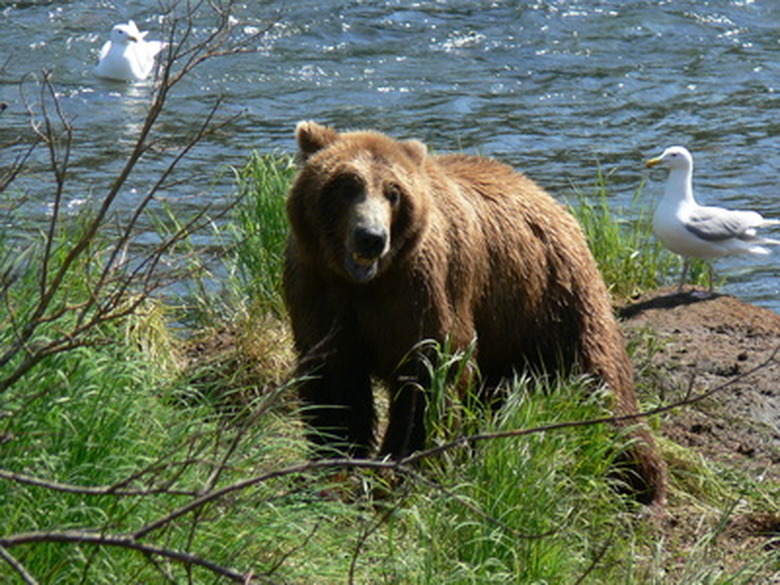Flowering Trees In Alaska
Gardening in Alaska's United States Hardiness zones 2 to 4, where winter temperatures can plunge to a mind-numbing minus 50 F, presents a set of challenges not found in any other American state. With those challenges, however, comes a growing season during which plants will bask in sunlight for up to–in Fairbanks–21 hours a day. The results are flowering trees heavy with blooms and fruit that make splendid ornamental additions to Alaska gardens.
Pacific Crabapple
A small–up to 40 feet high–tree growing in the coastal valleys of Southern Alaska, Pacific crabapple provides spring bloom and late-summer red or orange fruit. Older trees with cavities provide nesting sites. While the trees' branches seem to be thorny, according to the Washington Native Plant Society, the thorns are really twigs on which the trees set buds. White or pink blooms appear in late April or May, attracting butterflies with their nectar. Crabapples stay on trees well into the winter, providing much-needed food for songbirds. Deer, bears and foxes also forge on the fruit, which makes tasty preserves. Pacific crabapple trees like moist to wet locations in full sun to part shade. They are excellent choices for stream bank stabilization.
- Gardening in Alaska's United States Hardiness zones 2 to 4, where winter temperatures can plunge to a mind-numbing minus 50 F, presents a set of challenges not found in any other American state.
- A small–up to 40 feet high–tree growing in the coastal valleys of Southern Alaska, Pacific crabapple provides spring bloom and late-summer red or orange fruit.
Red Osier Dogwood
Red osier dogwood (Cornus sericea) grows in the forest understory and along streams from central Alaska east into Canada. A small tree, the red osier seldom exceeds 15 feet. Its drooping reddish branches, resembling those of willows, root where they touch the ground. They add eye-catching interest to a winter garden. In May and June, red osier dogwood has flat clusters of small white flowers that give way to white berries in the fall. The berries make a stunning contrast against the tree's maroon foliage. Game birds, small mammals, bears, elk and deer all browse on the fruit or twigs and leaves. Plant these trees in partially shady locations with moist, well-drained, pH-neutral soil. They can handle shallow spring flooding. Remove root suckers to control the trees' spread.
- Red osier dogwood (Cornus sericea) grows in the forest understory and along streams from central Alaska east into Canada.
Common Chokecherry
Found throughout Alaska, chokecherry (Prunus virginiana) belongs to the rose family. This 20-to-30-foot tree's abundant 3- to 6-inch clusters of fragrant white flowers appear between May and July. Red or black cherries show up in August or September, becoming sweeter with every passing day. Pitted cherries, a favorite snack for Alaska's elk, moose, deer and bears, are in high in fiber and vitamin K. They make excellent jelly, syrup, juice and vinegar. Their leaves and seeds, however, are toxic. Clean them carefully before processing. Plant chokecherry in sun or shade. While it prefers moist pH-neutral soil, it's not at all fussy about soil type and will grow in anything from sand to clay. Chokecherries are susceptible to tent caterpillar invasions.
- Found throughout Alaska, chokecherry (Prunus virginiana) belongs to the rose family.
- Pitted cherries, a favorite snack for Alaska's elk, moose, deer and bears, are in high in fiber and vitamin K. They make excellent jelly, syrup, juice and vinegar.
